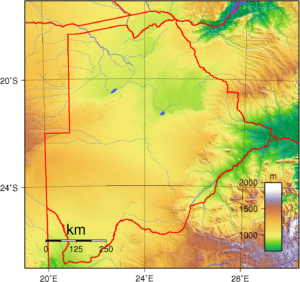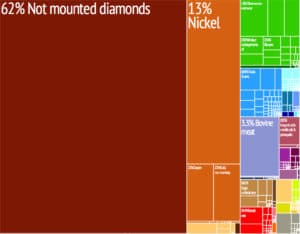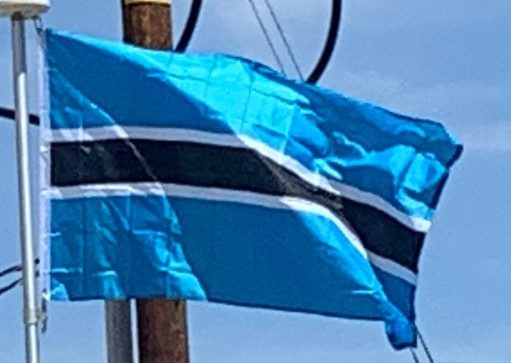The presidency passed to the sitting Vice-President, Quett Masire, who was elected in his own right in 1984 and re-elected in 1989 and 1994. Masire retired from office in 1998. He was succeeded by Festus Mogae, who was elected in his own right in 1999 and re-elected in 2004. The presidency passed in 2008 to Ian Khama (son of the first President), who had been serving as Mogae’s Vice-President since resigning his position in 1998 as Commander of the Botswana Defence Force to take up this civilian role.
A long-running dispute over the northern border with Namibia’s Caprivi Strip was the subject of a ruling by the International Court of Justice in December 1999. It ruled that Kasikili Island belongs to Botswana.
Geography:
At 224,607 square miles Botswana is the world’s 48th-largest country. It is similar in size to Madagascar or France.
The country is predominantly flat, tending toward gently rolling tableland. Botswana is dominated by the Kalahari Desert, which covers up to 70% of its land surface. The Okavango Delta, one of the world’s largest inland deltas, is in the northwest. The Makgadikgadi Pan, a large salt pan, lies in the north.

The Limpopo River Basin, the major landform of all of southern Africa, lies partly in Botswana, with the basins of its tributaries, the Notwane, Bonwapitse, Mahalapye, Lotsane, Motloutse and the Shashe, located in the eastern part of the country. The Notwane provides water to the capital through the Gaborone Dam. The Chobe River lies to the north, providing a boundary between Botswana and Namibia’s Zambezi Region. The Chobe River meets with the Zambezi River at a place called Kazungula (meaning a small sausage tree, a point where Sebitwane and his Makololo tribe crossed the Zambezi into Zambia).
Economy:
Since independence, Botswana has had one of the fastest growth rates in per capita income in the world. Botswana has transformed itself from one of the poorest countries in the world to an upper middle-income country. Although Botswana was resource-abundant, a good institutional framework allowed the country to reinvest resource-income in order to generate stable future income. By one estimate, it has the fourth highest gross national income at purchasing power parity in Africa, giving it a standard of living around that of Mexico.

The Ministry of Trade and Industry of Botswana is responsible for promoting business development throughout the country. According to the International Monetary Fund, economic growth averaged over 9% per year from 1966 to 1999. Botswana has a high level of economic freedom compared to other African countries. The government has maintained a sound fiscal policy, despite consecutive budget deficits in 2002 and 2003, and a negligible level of foreign debt. It earned the highest sovereign credit rating in Africa and has stockpiled foreign exchange reserves (over $7 billion in 2005/2006) amounting to almost two and a half years of current imports.
An array of financial institutions populates the country’s financial system, with pension funds and commercial banks being the two most important segments by asset size. Banks remain profitable, well-capitalized, and liquid, as a result of growing national resources and high interest rates. The Bank of Botswana serves as a central bank. The country’s currency is the Botswana pula.
